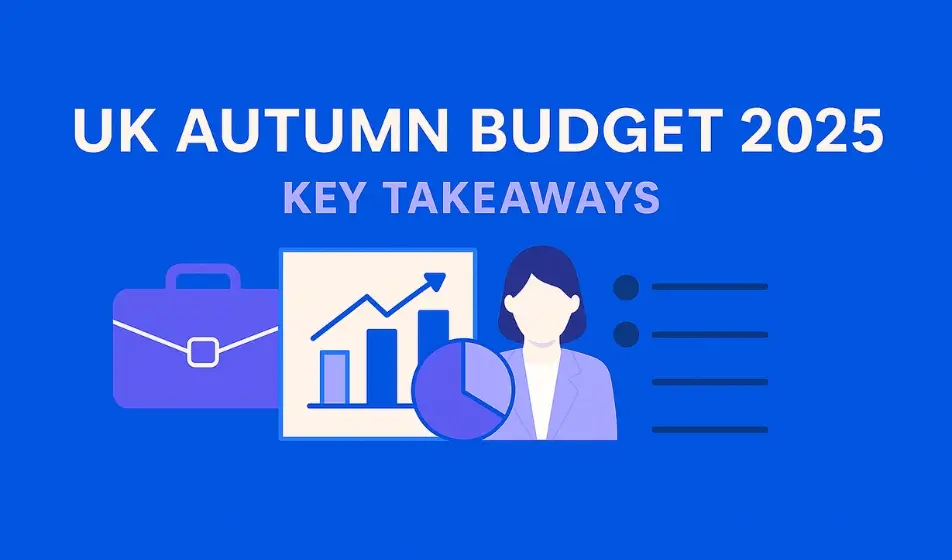When you ask UK employers about their biggest challenges and headaches in 2025, there are two words on everybody’s mind:
National Insurance.
From April 2025, UK employment costs are set to rise significantly. Now, businesses need to think carefully about budgets to identify where the extra funds will come from - and what the trade-offs will have to be.
If you haven’t already worked this out, time is running out to get it right. But National Insurance, just like any tax, can be difficult to understand and calculate. To help you get started, we’ve pulled together this full guide to employer National Insurance, to help you prepare for the changes.
What is National Insurance?
National Insurance is one of the three main taxes the British Government collects. In 2023/24, it contributed 21% of the country's total tax revenue, making it the second largest contributor after Income Tax (33%) and just ahead of VAT (20%).
In theory, the tax exists to raise money for the NHS, social care and old age pensions. In practice, however, there’s very little difference in how it is spent, compared with other taxes.
This leads to several common misconceptions around how National Insurance is raised and spent. Many consider it to be a contribution-based system (like a private pension), where the Government creates a personal ‘National Insurance pot’ for each taxpayer. Despite the name, this isn’t the case at all – it’s not an insurance system and does not operate like a pension.
In most ways, National Insurance contributions (NICs) operate in a very similar way to Income Tax, for several key reasons:
- Revenue levied through NICs goes directly into the central Government and is used for day-to-day public spending.
- The amount of money an individual contributes to the system has very little effect on their state pension, NHS or social care entitlements.
- Almost all NICs taxpayers are entitled to a tax-free threshold which, like Income Tax, sits at £12,570 a year for employees and the self-employed. For employers, it currently sits at £9,100 a year.
Nonetheless, there are a few superficial differences between National Insurance and Income Tax, which we’ll discuss in more detail below.
But perhaps the biggest difference is this: NICs are paid by both individual employers and employees. This means businesses are responsible for both deducting NICs from their employees’ salaries (just like Income Tax) as well as paying their own contributions on top of that.
What are employer National Insurance contributions?
In reality, there are several different types of National Insurance, depending on who is paying them:
1. Class 1 [Employers]: These are paid by employers as a proportion of their workers’ salaries. These are set to change from April and are discussed in more detail below. Here are the current rates:
- £0 - £9,100: 0% (Tax-free threshold)
- £9,100+: 13.8%
2. Class 1 [Employees]: These are deducted from employees’ salaries via PAYE, just like Income Tax. Here are the standard rates for employee Class 1 NICs:
- £0 - £12,750: 0% (Tax-free threshold)
- £12,750 - £50, 270: 8%
- £50,270 +: 2%
3. Class 1a and 1b: This is an extra tax paid by employers on certain benefits, expenses and redundancy packages. Check the UK Government website for more details.
4. Class 2: Class 2 NICs were a flat rate paid by the self-employed. Until 2024/25, they were charged at a single rate of £3 a week, regardless of earnings or profits. As of April 2024, the tax has been effectively abolished and now only exists to allow self-employed people to make voluntary contributions if they choose to do so. In this sense, it now operates like Class 3 NICs, but for self-employed people.
5. Class 3: Class 3 NICs are voluntary contributions that anyone can pay. This exists because a person needs to have paid at least 10 years’ worth of National Insurance to qualify for the state pension, and 35 years to qualify for the full entitlement. Therefore, employees can use Class 3 NICs to ‘top up’ their contributions if they haven’t paid enough over their careers.
6. Class 4: These are the standard NIC contributions paid by the self-employed, charged as a proportion of total profits. In practice, this is very similar to employee NICs, though the rates are slightly different. Unlike employees, self-employed people can also deduct legitimate business expenses from their profits.
The rates and thresholds for Class 4 NICs are very similar to Class 1 employee contributions:
- £0 – £12,570: 0% (Tax-free threshold)
- £12,570 – £50,270: 6%
- £50,270+: 2%
What is a tax-free threshold?
Before we can work out how to calculate National Insurance, it's first helpful to discuss the tax-free threshold, otherwise known as the personal threshold or lower earnings limit.
This is the amount of money you can earn before any tax is paid. For employees, the threshold is identical to Income Tax, at £12,570 a year or £1,048 a month. This means employees who earn less than this pay no National Insurance whatsoever.
To understand how this works, let’s consider a fictional employee: Jane, who has a part-time job working at PR Newsagents, and earns £15,000 a year or £1,250 a month. Since this is only just over the personal threshold, most of Jane’s wages are tax-free. Here’s what her tax breakdown would look like:
- £0 - £1,048: 0%
- £1,048 - £1,250: 8%
All wages over £1,048 monthly are charged at the standard Class 1 employee rate of 8%. To work out Jane’s contributions, you’d therefore use the following calculations:
- £1,250 - £1,048 = £202
- 8% of £202 = £16.16
This means Jane’s employers should deduct £16.16 a month from her salary, totalling £193.92 a year.
Crucially, the tax-free threshold operates in the same way for all employees, regardless of income. Consider Jane’s branch manager, Alison, who earns £50,000 a year or £4,166.66 a month. Though Alison earns significantly more than Jane, she still only pays National Insurance on the £3,118.67 a month (£37,424 a year) she earns over the tax-free threshold. This makes Alison’s payments £249.49 a month or £2,993.91 a year.
The tax-free threshold also exists for Class 1 employer NICs and Class 4 self-employed NICs. It operates in the same basic way, with only minor differences to the rate it’s set at.
👀 Check out Breathe's National Insurance Calculator here
National Insurance vs. Income Tax: What are the key differences?
In practice, there are few meaningful differences between National Insurance and Income Tax, for the reasons we discussed above. However, there are a few minor differences to be aware of:
- National Insurance is paid by both employers and employees.
- Unlike Income Tax, National Insurance is not charged on income from sources like savings, pensions or property.
- To qualify for the state pension, an individual needs to have paid National Insurance for at least 10 years, or 35 years to get the full entitlement. Income Tax, on the other hand, has no link between contributions and entitlements, meaning there is no need for a separate ‘voluntary’ Income Tax.
- The rates for Income Tax are generally higher, starting at 20% on all earnings above £12,570, in comparison to 8% for employee NICs and 6% for the self-employed.
- Unlike National Insurance, Income Tax rates get higher the more you earn. Earnings over £50,270 are charged at 40% and those over £125,140 are subject to a 45% rate. For National Insurance, on the other hand, all earnings over £50,270 are charged at 2%, lower than the standard rate of 8% for employees. This makes Income Tax more progressive than National Insurance, since higher earners pay more.
Changes to National Insurance: What employers need to know
In the Autumn 2024 Budget, the new Labour Government announced tax rises for the Class 1 National Insurance contributions paid by employers. This means from April 2025, the rates will be as follows:
- £0 - £5,000: 0% (Tax-free threshold). This threshold will reduce from £9,100.
- £5,000+: 15%, an increase from the existing rate of 13.8%.
This means the headline tax rate paid by employers will increase by 1.2% and the tax-free threshold will reduce by £4,100. Taken together, these measures will significantly increase the taxes paid by employers.
How to calculate employer National Insurance contributions
To understand the tax rises in practice, let’s go back to PR Newsagents and consider one of Jane’s full-time colleagues, Mark, who earns £2,500 a month (£30,000 a year).
Under current tax rates, this is the breakdown of National Insurance contributions paid by Mark’s employer, based on his monthly salary:
- £0 - £758: 0% (Tax-free threshold)
- £758 - £2,500: 13.8%
Therefore, we would use the following calculations to work out PR’s National Insurance charges:
- £2,500 – £758 = £1,742
- 13.8% of £1,742 = £240.40
This makes PR’s NI contributions for Mark’s salary £240.40 a month or £2,884.20 a year. Crucially, this is different from the employee NICs which are deducted from Mark’s salary, at £116.16 a month or £ 1,393.92 a year.
But as we’ve explained, employer National Insurance contributions are set to significantly rise from April 2025. Here is the breakdown of PR’s NICs for Mark’s salary from April 2025:
- £0 – £417: 0% (Tax-free threshold)
- £417 – £2,500: 15%
Therefore, we can use the following calculations to find out PR’s NICs from April 2025:
- £2500 – £417 = £2,083
- 15% of £2,083 = £312.45
This means the employer NICs will rise to £312.45 a month and £3,749.40 a year. This is a total increase of £864.60 a year, for every employee on a £30,000 salary.
Employment Allowance: How to reduce the impact of National Insurance contributions
The tax rises for employers aren’t a small sum. Crucially, these employer National Insurance contributions are paid on each individual employee in the company. The more employees you have and the higher their salary, the more you’ll pay overall.
For this reason, businesses up and down the country will be looking for ways to reduce their National Insurance contributions. Unfortunately, there aren’t many easy ways to do this – but there is one important option you should be aware of: The Employment Allowance.
This is a policy designed to reduce the National Insurance burden, particularly for the smallest companies. It acts as a single flat deduction from your annual National Insurance bill, regardless of the number of employees you have. To be eligible for the Employment Allowance, your total annual contributions must be less than £100,000.
From April 2025, the Employment Allowance will rise from £5,000 a year to £10,500 a year. This will reduce National Insurance costs for those eligible, with the smallest businesses feeling the most benefit.
Here’s how the cost savings break down for businesses of three different sizes. For simplicity, we’ve assumed a salary of £26,000 a year for all workers (£2,166.67 a month), which is a full-time minimum wage (from April 2025), expressed as an annual salary and rounded up to the nearest £1,000.
- If you have five employees, your total National Insurance bill would be £1,312.25 a month or £15,747.03 a year. In this case, the Employment Allowance deduction of £10,500 would bring your total annual rate down to £5,247.03 a year or £437.25 a month – a cost saving of 66.68%.
- If you have 20 employees, your costs would be £5,249.01 a month and £62,988.12 a year. Therefore, the employment allowance would bring your costs down to £52,488.12 a year or £4,374.01 a month – a cost saving of 16.67%.
- If you have 40 employees, your total costs would be £10,498.02 a month or £125,976.24 a year. Since the total annual cost exceeds £100,000, this employer would not qualify for the Employment Allowance and is therefore not entitled to a discount.
As you can see from the example, the Employment Allowance is designed to help the smallest businesses. But importantly, it isn’t automatic, and eligible businesses must apply for the exemption. To find out how to do so, check out this guide from the UK Government website.
A challenging financial period ahead
The tax rises that will apply from April 2025 are some of the most significant that businesses have faced in recent years. But they’re not the only cost rises on the horizon.
If you have employees on or around the minimum wage, you’ll also have another set of cost rises from April. This is because the National Minimum Wage and National Living Wage are both rising at the same time as National Insurance.
This means the next few weeks are absolutely crucial for businesses. With employment costs rising by so much, it’s vital that you understand where the additional funds are going to come from and what the knock-on effects of that will be on other budgets.
Here, there are no easy answers and the right choice will be different for all businesses. But whatever choice you make, you need to have a plan sooner rather than later.
So where do you start? To help you assess and plan your budgets for 2025/26, we’ve pulled together a 6-week guide to financial planning ahead of April 2025.

Author: Matt Rooke
Matt is a freelance tech writer and content manager who specialises in HR and cybersecurity. Over his seven-year career, he's created content of all shapes and sizes for brands such as Dropbox, Microsoft, Heimdal, Learnerbly, NTT, IFS, and many others. His goal is to translate complex topics into straightforward, tangible and practical advice. When not writing, you can usually find Matt geeking out over languages, music or politics.





